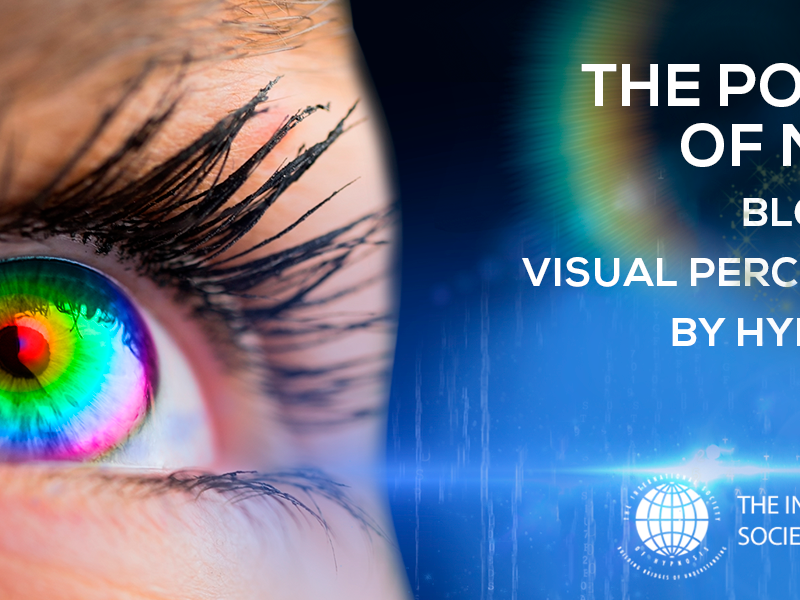
The Power of Mind: Blocking Visual Perception by Hypnosis
BY FANNI PUSZTAI
The “Findings of Note” section serves as a review of current hypnosis literature published not in the hypnosis journals but in the wider scientific – medical and psychological – area. In this section I attempt to provide an insight into a wide range of practical applications and theoretical developments in the field of hypnosis.
In this edition of Findings of Note, I would like to present a recent article from the world of hypnosis.
SCHMIDT, B., HECHT, H., NAUMANN, E., & MILTNER, W. H. R. (2017). THE POWER OF MIND: BLOCKING VISUAL PERCEPTION BY HYPNOSIS. SCIENTIFIC REPORTS, 7(1), 4889.
The authors took on an interesting quest to objectively show a subjective phenomenon long associated with hypnosis, the alteration of certain perceptions under hypnotic altered states of consciousness. Specifically, they wanted to examine what happens to visual perception when subjects receive suggestions under hypnosis to not see what they are actually looking at. For this reason, they recruited healthy participants and presented the Oddball paradigm to them: they were looking at a screen where simple stimuli, such as triangles, circles and squares appeared in random order and with different frequency, meaning that triangles (so called frequent stimuli) appeared on screen 80% of the time, while circles and squares (so called rare stimuli) appeared 10-10% of the time. The participants’ task was to count how many times only one of the rare stimuli, that is the squares appeared on screen.
Each participant completed this task once under hypnosis that served as the experimental condition and once in a control condition, in counterbalanced order. The most important notion of the hypnosis condition was that subjects received suggestions about a wooden board blocking their perception of the screen. Before the experimental condition, subjects received a real wooden board to hold and examine so this board would serve as a model for the upcoming perceptual blockage, and their hypnotizability was also assessed. The researchers measured the counting performance of participants by the percentage of correct answers, their brain activity by EEG electrodes, the number of eye Fanni Pusztai – 23 – 2018, Volume 42, No. 4 blinks by eye tracking and their subjective experience of the perceptual blockade by a 5-point Likert rating scale.
Their results showed that indeed in the hypnosis condition counting performance was significantly worse, with a mean 20.8% more mistakes made while counting squares on the screen. They also found that while counting performance was worse for all participants in the experimental group, high hypnotizables showed a greater reduction. Moreover, highly hypnotizable participants subjective experiences also related to their counting performance, meaning that they had a more realistic experience of the wooden board blocking their perception.
The main goal of eye-tracking was to show that any differences between groups were not caused by possible eye closure, that is, the authors wanted to make sure participants eyes were open during trials. Interestingly their results showed that during the experimental condition under hypnosis, participants actually blinked less often than in the control condition; yet their counting performance was worse. Regarding brain activity the authors examined different event related potentials measured by the EEG and found that while earlier responses (occurring around 100-200 ms after stimulus) were unaffected, later responses (occurring around 300 -400 ms after stimulus) were significantly reduced in the hypnosis condition. Earlier responses are associated with basic sensory processing while later responses are associated with higher-order cognitive processing of stimuli. Here again the experimental group showed an overall decline with high hypnotizables showing the biggest effects.
Concluding, the authors argue that these results show that the extent of reduction in event related brain potentials are related to counting performance and the subjective experiences of participants: the smaller the specific response in the brain, the more stimuli was missed and the more realistic the visual blockage felt, thus brain response, behavior and subjective experience were all in synchrony during hypnosis. The fact that only later brain responses were reduced also tells us that during hypnosis participants could still see the stimuli, but its further processing was impaired, pointing to a dissociation between sensory and higher perceptual processing areas in the brain. They point out that this simple task itself could show how powerful our mind is, as it is able to modify how we process what we see in response to a few suggestions.